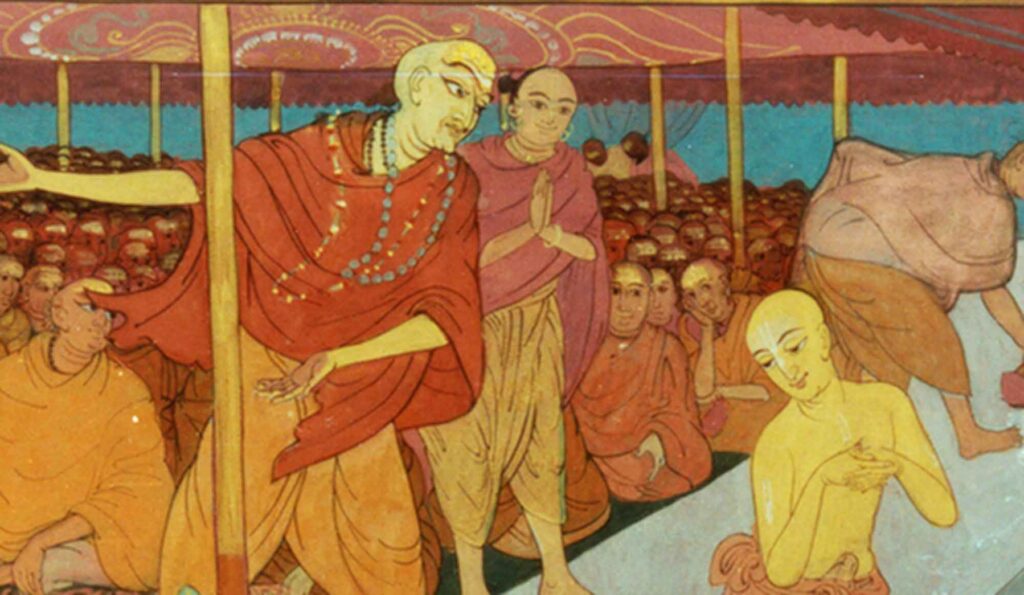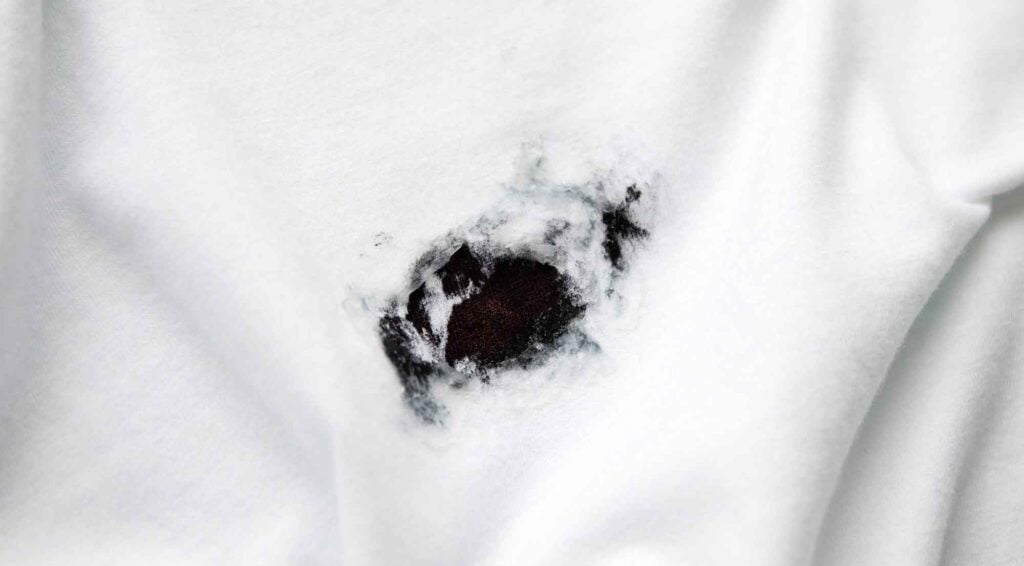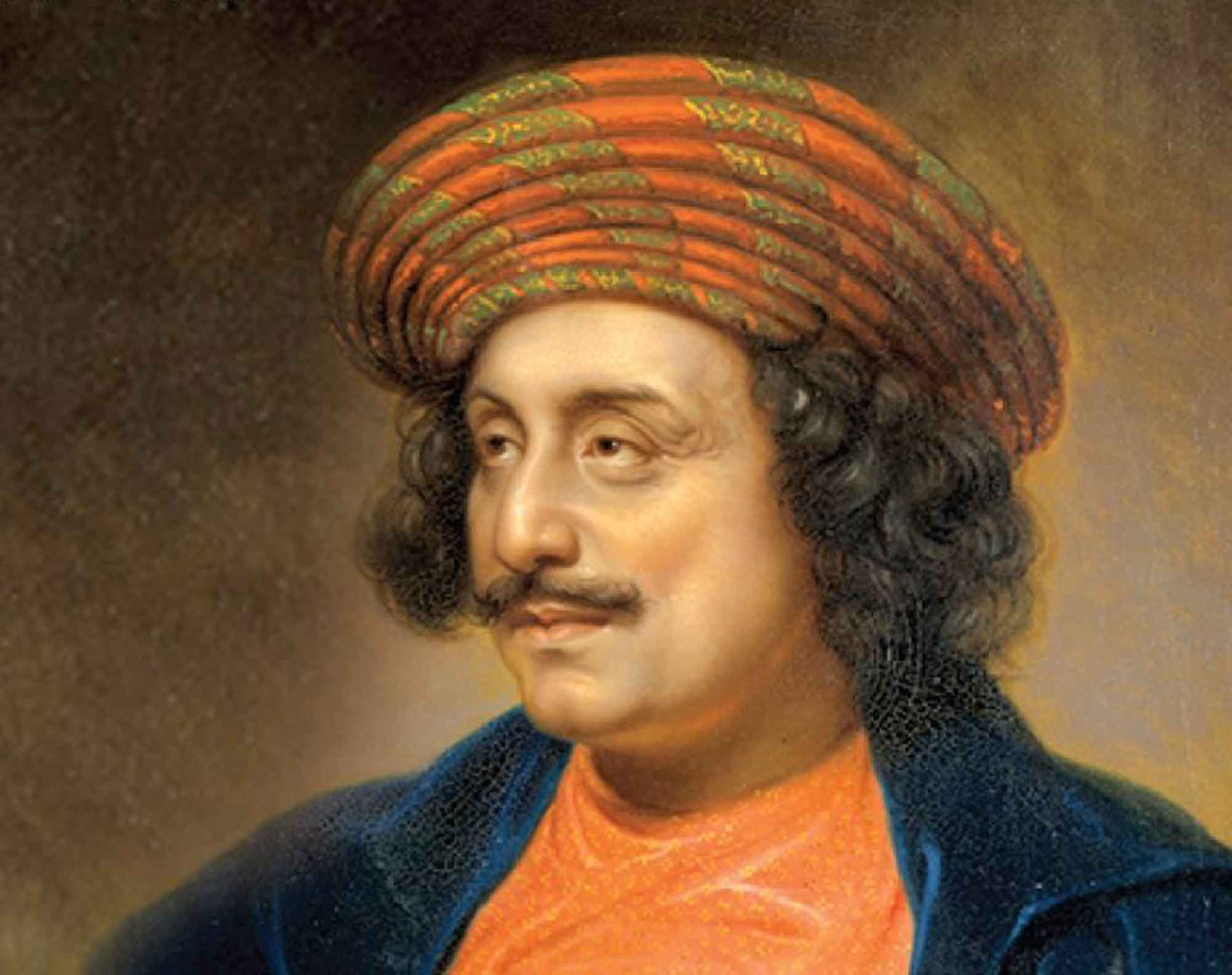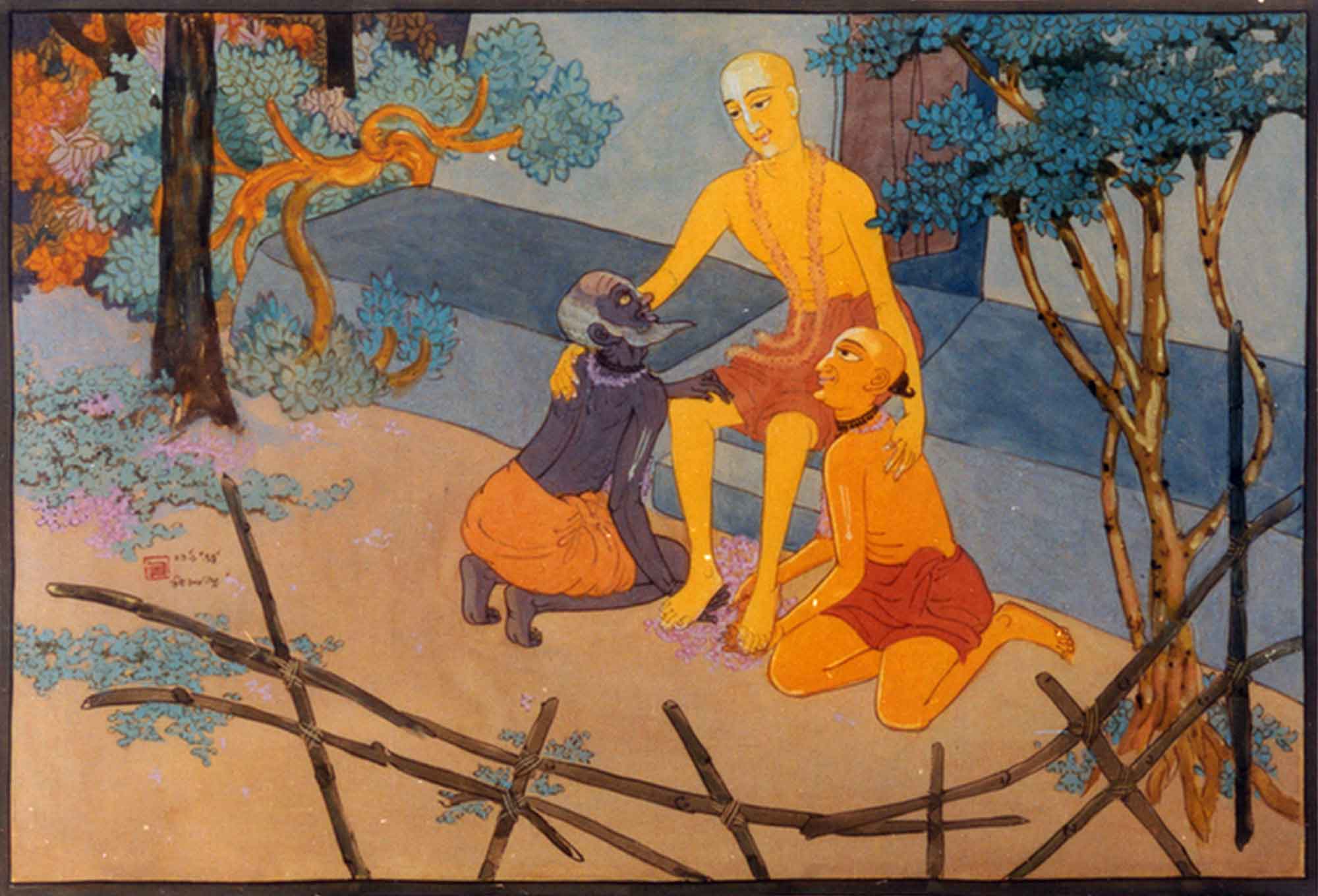Overview
‘Śrī Caitanya-bhāgavata’ was first published in Sajjana Toṣaṇi, Vol. 13 issue 1 in 1901. Śrīla Bhaktivinoda Ṭhākur reviews a new edition of Śrī Caitanya Bhāgavata by Atula Kṛṣṇa Gosvāmī. While the Thākura is very happy for the most part with the publication, he also points out some defects.
(translated by Swami B.V. Giri)
Śrī Caitanya-bhāgavata of Atula-Kṛṣṇa Gosvāmī
The renowned resident of Calcutta, Śrīyukta Atula-Kṛṣṇa Gosvāmī Prabhu, has published an edition of the book Śrī Caitanya-bhāgavata. This book is an unparalleled gem within the Gauḍīya Vaiṣṇava society and a treasure of Bengali literature. The edition printed in Baṭatalā is extremely misleading. Some book publishers have published several editions. They were also spoiled by errors in many places. Therefore, the version of Śrīyukta Atula-Kṛṣṇa Prabhu is the most orderly and best of all. A deficiency has been removed in the Gauḍīya society with the printing of this version. We can easily say that the devotees will collect and constantly read this work. The book has been published on good paper, with accurate letters and in an excellent form. There is no doubt that all the individual notes written at the bottom of each page will be especially beneficial to the reader.
Suggestions for the Second Edition
We are very happy that referenced ślokas have also been compiled in the book. However, since a Sanskrit commentary and text explanation have been included amongst all the ślokas, there may be some difficulty for the Vaiṣṇava assembly to read Śrīla Vṛndāvana Dāsa Thākura’s book. It would have been better if the explanation and translation had been separated and at the bottom. If that were the case, then there would be no interruption in reading. When Gosvāmī Prabhu prints the second edition, he should properly consider this matter.
The appendix is not bad. This is the result of the hard work of Gosvāmī Prabhu. It would be better if a little more effort were made in some places in the book. We will show one place in this regard, then we will be silent. In the book’s Tenth Chapter of the Madhya-khaṇḍa, there is this:
prabhu bale sarva pāṭha kahila tomāre
eka pāṭha nāhi kahi āji kahi tore
sampradāya-anurodhe sabe manda paḍe
sarvataḥ pāṇi-pādaṁ tat ei pāṭha naḍe
āji tore satya kahi chāḍiyā kapaṭa
sarvatra pāṇi-pādaṁ tat ei satya pāṭha
sarvataḥ pāṇi-pādaṁ tat sarvato ’kṣi-śiro-mukham
sarvataḥ śrutimal loke sarvam āvṛtya tiṣṭhati
(“The Lord said, ‘I explained all the verses, but one verse I did not explain, which I will tell you today. Due to belonging to a particular sampradāya, they give an incorrect interpretation. The verse is not sarvataḥ pāṇi-pādaṁ tat. Without any deceit, I tell you today that the actual verse is sarvatra pāṇi-pādaṁ tat.’ His hands and feet are everywhere. His eyes, heads and mouths are everywhere. His ears are everywhere. Thus He exists, pervading all things.’” – Caitanya-bhāgavata, Madhya-khaṇḍa 10.128-131)
Commentary: atha paramātma vastūpadiśati, sarvataḥ pāṇīti. tat paramātma vastu, savataḥ pāṇī-pādam ityādi visphuṭārtham
(“Thus He is teaching about the Paramātmā who has hands everywhere etc. That Paramātmā has hands and feet everywhere etc. in order to be all-pervasive.”)
ati gupta pāṭha āmi kahila tomāre
tomā bai pātra kebā āche kahibāre
(“‘I have thus explained this mystical verse to you. Other than You, who can fully understand it?’” – Caitanya-bhāgavata, Madhya-khaṇḍa 10.132)
It would be nice to see some new points within the published text. All these issues should be considered for the new edition. The appendix gives explanations and statements, and also controversy regarding many of those subjects. On page 29, 220.1.19:
“It should be understood from the phrase ‘daśākṣara mate’ that there is no separate mantra for worshipping Mahāprabhu.”
There are two sampradāyas divided by two opinions concerning a separate mantra for Mahāprabhu. Why within this text, the publisher Atula Prabhu spoke against one sampradāya in favour of another sampradāya, I cannot say. Philosophical opinions should be kept away from all these texts.
Inaccuracies in the Description of Navadvīpa
He has given geographical locations and has written many things in the table of contents. In his explanation of Kuliyā he has written that the old Navadvīpa is in the middle of the Gaṅgā. Most of the present-day Navadvīpa is Kuliyā. Formerly Kuliyā was on the other side of Navadvīpa. After reading these words, we were partly happy and partly sad. Due to a lack of research, Prabhu has written that the old Navadvīpa is in the middle of the Gaṅgā. In various places in this book we find that many thousands of people lived in the old Navadvīpa. Otherwise it would not be possible for thousands and thousands of people to bathe at a single ghāṭa. The middle of the Gaṅgā is no more than one krośa (1.8 miles). So I don’t understand how the old Navadvīpa, which extended to about five or six krośas, could completely disappear into the middle of the Gaṅgā which is only one krośa wide! No doubt, many parts of the old Navadvīpa have been lost in the middle of the Gaṅgā and covered by the sands of the Gaṅgā. Yet the northern part of the old Navadvīpa is still visible. In the text of this Bhāgavata, the town of the Kazi, Sīmuliyā, Gaṅgānagara, Gādigāchhā etc. are described as being within the interior of the old Navadvīpa. Misconceptions have arisen because all these places are not described as separate villages within Navadvīpa, but as separate villages adjoining Navadvīpa. Nadīyāra ekānte nagara sīmulīyā (‘Sīmulīyā was situated on the outskirts of Nadia.’ – Caitanya-bhāgavata, Madhya-khaṇḍa 23.348). From there, there is a road to the Kazi’s residence, and from the Kazi’s residence, Mahāprabhu went to the courtyard of Śrīdhara and to villages such as Gādigāchhā etc. Thus it is said, sarva-navadvīpa nāce śrī gauraṅga rāya (‘Śrī Gaurāṅga Rāya danced in all the villages of Navadvīpa’ – Caitanya-bhāgavata, Madhya-khaṇḍa 23.498). In view of all this, it is incorrect to consider those villages to be separate from Navadvīpa.
We do not wish to say anything more about this. What we have to say about this world-renowned work, in relation to the commentary and explanation, must be neutral. If one is partial towards a certain opinion, then only people with that opinion will like the book. It will be neglected by the common people.
In any case, we constantly dance in ecstasy, holding the edition of Śrīyukta Atula Prabhu upon our heads, giving our thanks to him.













